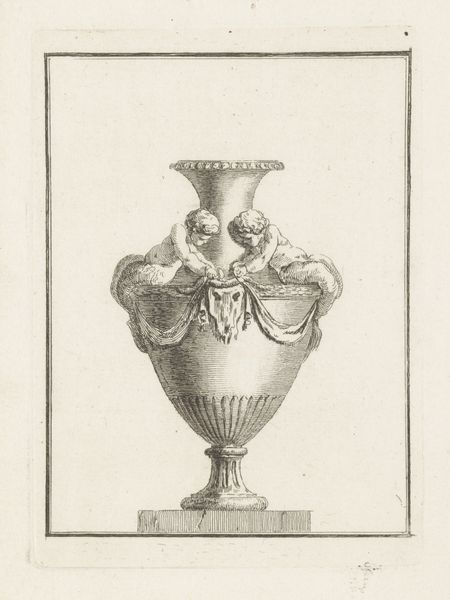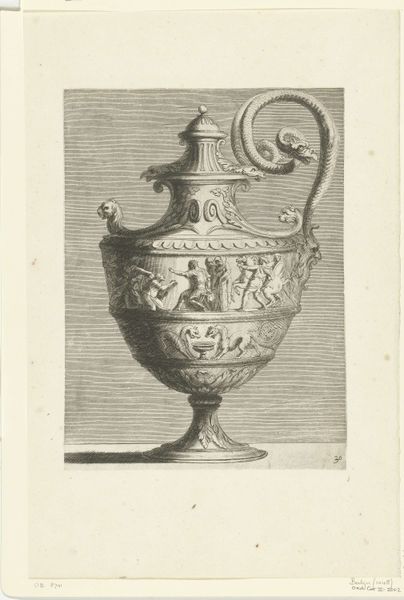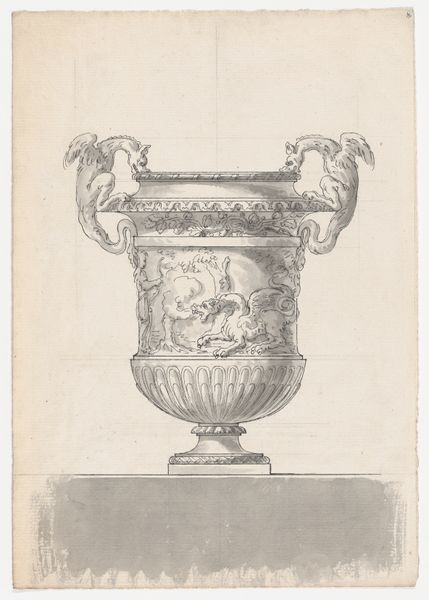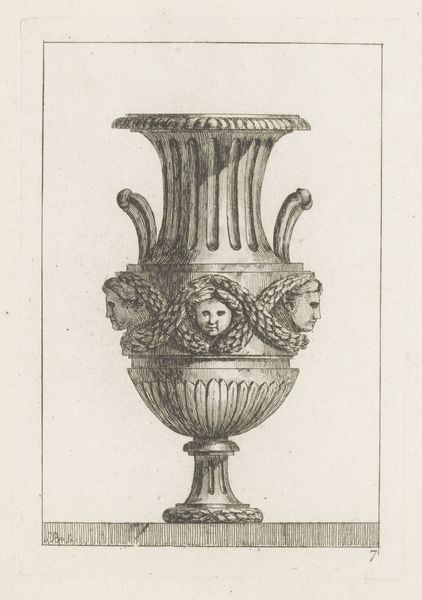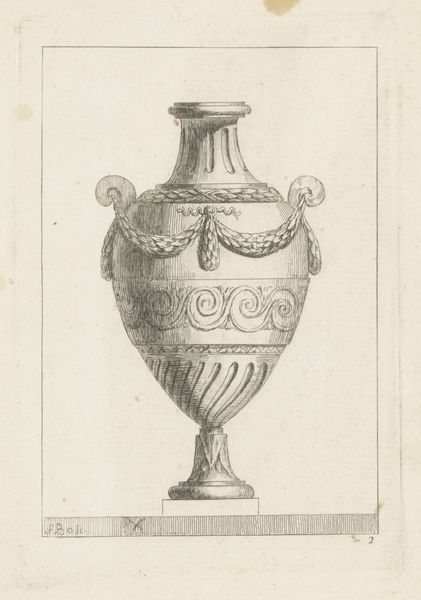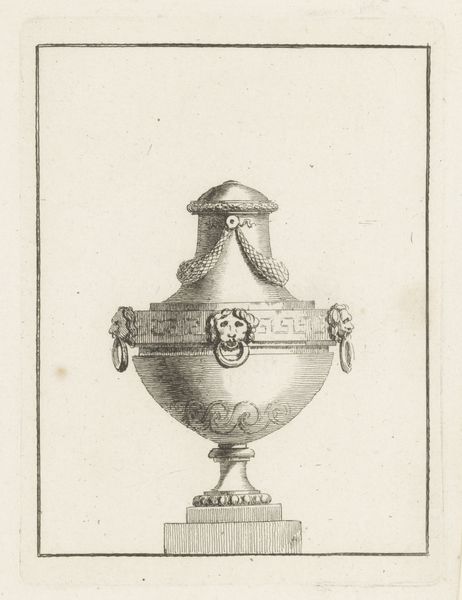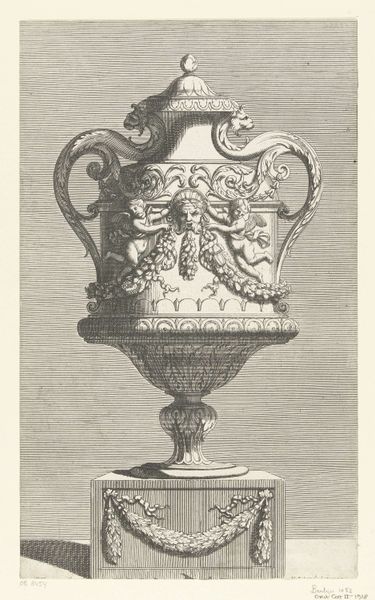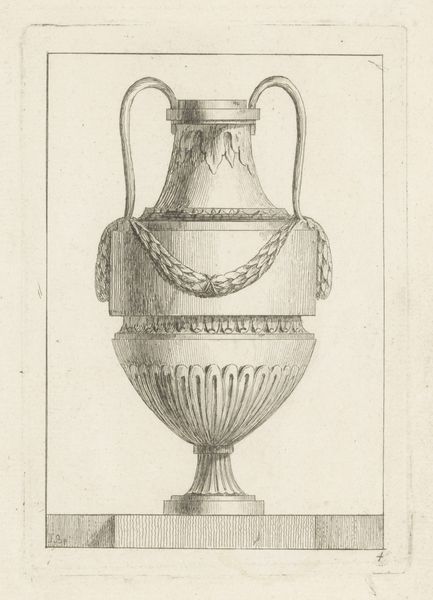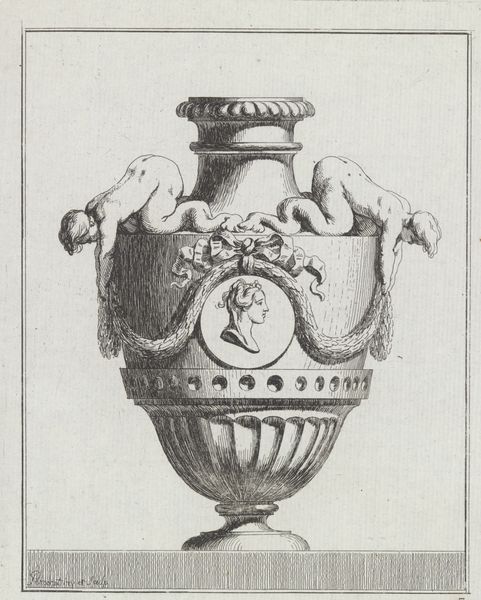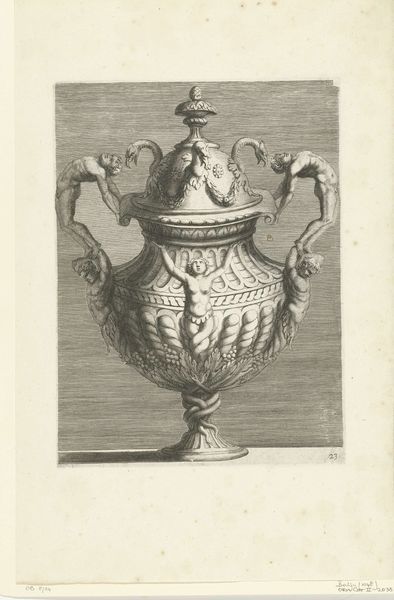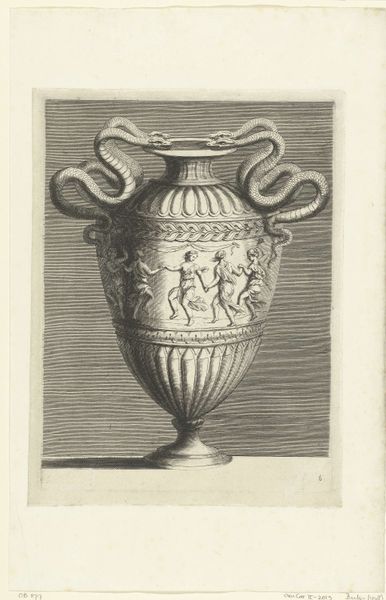
print, engraving
# print
#
form
#
engraving
#
rococo
Dimensions: height 133 mm, width 96 mm
Copyright: Rijks Museum: Open Domain
Juste Nathan Boucher created this etching of a vase with putti in the 18th century. Dominating the vase’s midsection, we see putti—those chubby, winged infants so beloved in Renaissance and Baroque art. Descended from the ancient Roman Cupid, these figures are more than mere decoration. They represent a sense of playfulness, innocence, and a connection to the divine. The vase itself, with its classical form, evokes ancient Greece and Rome, a period when vases were not just functional but also potent symbols of wealth and status. Note the handles, reminiscent of the volutes on Ionic columns, and the fluted body, drawing on a rich architectural vocabulary. Throughout time, we witness these cherubic figures transition from religious art into emblems of secular love and beauty, adorning everything from paintings to porcelain. These forms endure, embodying an unbroken chain of cultural memory. They tap into our collective psyche. The vase becomes a vessel not only for flowers, but also for the emotional and cultural weight it carries across generations.
Comments
No comments
Be the first to comment and join the conversation on the ultimate creative platform.
